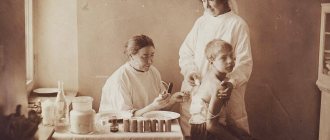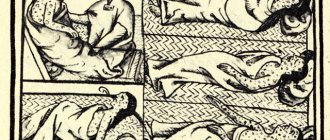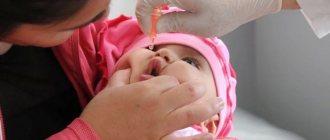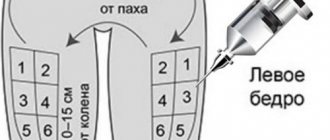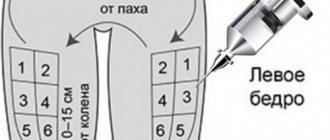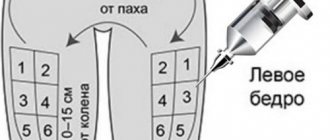While the world is waiting for a vaccine against coronavirus to appear, AiF decided to remember how vaccinations appeared in the first place.
In Russia, the start of vaccination dates back to 1768, when Catherine II set an example for the whole country by vaccinating herself and her son Paul . Many are sure that she did this thanks to the successes of Edward Jenner , who created the world's first vaccine. Even at school we were told how an English doctor noticed that milkmaids did not get smallpox. During milking, they became infected with cowpox, which is harmless to humans. Jenner received his vaccine from smallpox blisters on the udder of cows...
Article on the topic We ate porridge and wiped ourselves with alcohol. How our ancestors survived during pandemics
However, let's figure out what really happened. Catherine was vaccinated in 1768, and Jenner first vaccinated against cowpox in 1796—almost 30 years later. How so? It's simple - vaccines existed long before Jenner. Catherine was injected not with cowpox, but with human smallpox - she was infected in the hope that the disease would be mild. And then they were afraid not of complications from the vaccine, but of a severe infection, because up to 2-3% of those vaccinated died. The method was called smallpox vaccination, or variolation, and it was invented in China and India. Many centuries later, it reached England, where it became widespread among doctors. One of them, Thomas Dimmesdale , was chosen by the Russian Empress. The doctor was lucky: for his work in Russia he received the title of baron, a huge lifelong pension, a lot of expensive gifts and much more. After this “business trip” he opened both a clinic and a bank in England.
Thomas Dimmesdale. Public Domain
Let's practice on the cadets
For Dimmesdale’s visit, a hospital (smallpox house) was built in St. Petersburg and a staff of doctors was selected. There, the cadets tested the skills of English doctors. The first vaccinations were given to Dimmesdale's son, a medical student. The father was not allowed to communicate with the sick, so as not to infect the empress. He was at court every day, watching Catherine and Paul. This was a medical examination at a distance without undressing the patients - doctors were not allowed to see the bodies of high-ranking persons.
Not everything went smoothly for my son. Of the first two cadets vaccinated, one became seriously ill. But not smallpox - he ate too much unwashed fruit, he was heavily sick and vomited. For the next five cadets, vaccinations turned out to be useless - scars did not form at the injection site. They were vaccinated again using a more dangerous method: “by cutting and inserting lint into the wound, soaked in smallpox material and covered with a plaster.” Dimmesdale's method was less creepy, but not by much. The skin on the arm was cut until it bled, and a thread soaked in liquid from a smallpox vesicle was pulled along the cut. All this did not stop Catherine, despite the risk. She decided to be the first to be vaccinated to set an example for her community and people.
Smallpox according to GOST. How did vaccinations appear in Russia? More details
The vaccination was done in secret and at night. Dimmesdale inoculated three boys with smallpox in advance, so as not to look for sick people in a hurry when the hour was announced. Naturally, one of them was enough for vaccination. His name was Sasha Markov , the empress later thanked him with the title of nobility, the surname Ospenny and 3,000 rubles. However, Smallpox ended his life in poverty, debt and illness.
Dimmesdale explained to the Empress that she would be non-contagious for 5 days after the procedure. Therefore, during this five-day period she led a normal life, participating in all the amusements and general dinners, without showing that she had been vaccinated. Everything was kept secret, vaccination was announced only on the 5th day. After this, Ekaterina retired, and her temperature immediately rose and blisters appeared. At court they were very worried about Catherine, they were afraid that the men would tear the English doctor to pieces if something happened to their beloved queen. It was rumored that all this time a carriage was on duty at the palace to take the doctor away from the people's wrath to the very border. But everything worked out, Catherine’s body coped with the disease. For Grand Duke Paul, everything went easily.
How did Edward Jenner receive the smallpox vaccine?
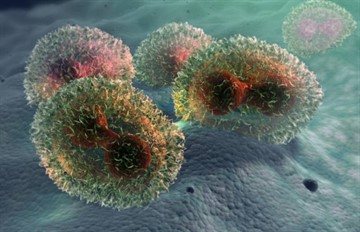
Like any invention, the discovery illuminates observant people. Edward Jenner noticed the paradox of milkmaids not contracting smallpox.
Therefore, he made the assumption that there is an inverse relationship between diseases of humans and animals and came to the conclusion that it was necessary to deliberately infect people with cow disease to protect them from smallpox.
By the way, Jenner was the first to use the term “vaccination,” since vaccinia is the Latin name for cowpox. His merit is that he was the first to publish his research, although smallpox vaccination received recognition later, in the 19th century.
When did they stop getting vaccinated against smallpox?
The massive nature of smallpox vaccinations made the victory over the infection in the world final, which was declared in 1980.
In 1982, smallpox vaccination was stopped in the Soviet Union. As for other countries, information about smallpox vaccination is contradictory.
It is known that, for example, in the USA, in 2001, the distribution of letters with alleged anthrax and in connection with the threat of the spread of smallpox forced the President of this country to order smallpox vaccination for all military personnel.
Vaccination statistics by region of Russia
| Region | Number of vaccinations | % of population | Vaccinations per day | Updated |
| Moscow | 4539902 | 35.9% | 16 000 | 04.09 |
| Moscow region | 3200000 | 41.5% | 14 200 | 04.09 |
| Krasnodar region | 1873752 | 33.0% | 7 665 | 04.09 |
| Saint Petersburg | 1627778 | 30.2% | 23 395 | 04.09 |
| Rostov region | 1459520 | 34.9% | 6 220 | 04.09 |
| Bashkortostan | 1173834 | 29.2% | 5 544 | 04.09 |
| Sverdlovsk region. | 1104014 | 25.7% | 5 535 | 04.09 |
| Samara region | 1043141 | 33.1% | 5 285 | 04.09 |
| Tatarstan | 1007391 | 25.9% | 3 428 | 04.09 |
| Nizhny Novgorod region. | 949226 | 29.9% | 4 515 | 04.09 |
| Chelyabinsk region | 815348 | 23.7% | 6 294 | 04.09 |
| Krasnoyarsk region | 810062 | 28.4% | 4 691 | 04.09 |
| Volgograd region | 800000 | 32.3% | 4 714 | 04.09 |
| Kemerovo region. | 791473 | 30.1% | 2 601 | 04.09 |
| Belgorod region | 717837 | 46.6% | 1 790 | 04.09 |
| Perm region | 692837 | 26.9% | 4 582 | 04.09 |
| Novosibirsk region | 683033 | 24.5% | 3 037 | 04.09 |
| Stavropol region | 658500 | 23.6% | 2 702 | 04.09 |
| Voronezh region | 647028 | 28.1% | 3 153 | 04.09 |
| Saratov region | 641592 | 26.8% | 2 517 | 04.09 |
| Altai region | 635832 | 27.7% | 2 756 | 04.09 |
| Chechnya | 626000 | 41.8% | 714 | 04.09 |
| Irkutsk region | 595190 | 25.1% | 3 709 | 04.09 |
| Omsk region | 582471 | 30.6% | 2 256 | 04.09 |
| Orenburg region | 581245 | 29.9% | 1 921 | 04.09 |
| Tyumen region | 570342 | 37.0% | 1 650 | 04.09 |
| Tula region | 551000 | 38.0% | 1 445 | 04.09 |
| Khanty-Mansi Autonomous Okrug | 534459 | 31.7% | 1 606 | 04.09 |
| Leningrad region. | 529217 | 28.0% | 2 212 | 04.09 |
| Crimea | 474094 | 24.9% | 1 014 | 04.09 |
| Dagestan | 392768 | 12.5% | 3 739 | 04.09 |
| Primorsky Krai | 388522 | 20.7% | 1 459 | 04.09 |
| Tver region | 370984 | 29.8% | 1 039 | 04.09 |
| Penza region | 370000 | 28.7% | 2 184 | 04.09 |
| Lipetsk region | 370000 | 32.8% | 1 500 | 04.09 |
| Kursk region | 368000 | 33.6% | 1 684 | 04.09 |
| Tambov region | 340515 | 34.2% | 1 872 | 04.09 |
| Yaroslavl region | 340000 | 27.4% | 2 110 | 04.09 |
| Bryansk region | 336009 | 28.4% | 899 | 04.09 |
| Udmurtia | 335472 | 22.5% | 716 | 04.09 |
| Ulyanovsk region | 334407 | 27.4% | 1 618 | 04.09 |
| Kirov region | 328000 | 26.2% | 1 556 | 04.09 |
| Buryatia | 322191 | 32.7% | 1 838 | 04.09 |
| Transbaikal region | 322022 | 30.6% | 1 140 | 04.09 |
| Khabarovsk region | 320002 | 24.6% | 1 455 | 04.09 |
| Sakha | 320000 | 32.6% | 1 600 | 04.09 |
| Astrakhan region | 319522 | 32.0% | 1 130 | 04.09 |
| Arkhangelsk region | 310263 | 28.7% | 1 092 | 04.09 |
| Ivanovo region | 308288 | 31.2% | 779 | 04.09 |
| Mordovia | 300426 | 38.6% | 1 204 | 04.09 |
| Kaliningrad region | 298489 | 29.3% | 1 652 | 04.09 |
| Chuvashia | 290667 | 24.1% | 1 628 | 04.09 |
| Tomsk region | 280418 | 26.2% | 1 294 | 04.09 |
| Kaluga region | 280108 | 28.0% | 2 148 | 04.09 |
| Vladimir region | 278000 | 20.7% | 2 928 | 04.09 |
| Vologda region | 275000 | 23.9% | 714 | 04.09 |
| Smolensk region | 260439 | 28.3% | 870 | 04.09 |
| Ryazan region | 259000 | 23.6% | 854 | 04.09 |
| Komi | 252876 | 31.1% | 1 153 | 04.09 |
| Amur region | 244583 | 31.3% | 1 690 | 04.09 |
| Kurgan region | 231383 | 28.3% | 891 | 04.09 |
| Murmansk region | 223000 | 30.4% | 1 084 | 04.09 |
| Oryol region | 211529 | 29.2% | 1 611 | 04.09 |
| Karelia | 183259 | 30.1% | 1 215 | 04.09 |
| Pskov region | 173864 | 28.0% | 665 | 04.09 |
| Mari El | 168758 | 25.0% | 1 185 | 04.09 |
| Sakhalin region | 167985 | 34.6% | 419 | 04.09 |
| Kostroma region | 166141 | 26.4% | 252 | 04.09 |
| Yamalo-Nenets Autonomous Okrug | 165500 | 30.3% | 643 | 04.09 |
| Khakassia | 164805 | 31.0% | 573 | 04.09 |
| Novgorod region | 160122 | 27.0% | 731 | 04.09 |
| Kabardino-Balkaria | 159227 | 18.3% | 608 | 04.09 |
| Sevastopol | 131575 | 25.8% | 279 | 04.09 |
| Ingushetia | 129160 | 25.1% | 762 | 04.09 |
| North Ossetia | 125476 | 18.1% | 777 | 04.09 |
| Karachay-Cherkessia | 109500 | 23.5% | 429 | 04.09 |
| Adygea | 108000 | 23.3% | 750 | 04.09 |
| Tyva | 102266 | 31.0% | 342 | 04.09 |
| Kamchatka Krai | 76737 | 24.6% | 545 | 04.09 |
| Kalmykia | 70000 | 25.9% | 500 | 04.09 |
| Altai | 59289 | 26.8% | 331 | 04.09 |
| Magadan region | 46000 | 33.1% | 86 | 04.09 |
| Jewish Autonomous Region | 34606 | 22.1% | 111 | 04.09 |
| Chukotka Autonomous Okrug | 21664 | 43.7% | 52 | 04.09 |
| Nenets Autonomous Okrug | 14433 | 32.5% | 3 | 04.09 |
| In Russia | 44 547 368 | 30.5% | 458 153 | 04.09 |
WE NO LONGER HAVE IMMUNITY TO SMALLPOX
“Historically, I devoted 15 years of my work at Vector to topics related to smallpox,” says Tatyana Sergeevna.
“Most people are sure that we defeated smallpox long ago and completely, even vaccinations against it were stopped as unnecessary. Is there something we don't know?
— Of course, the natural smallpox that caused epidemics and claimed millions of human lives in the past has been defeated. Since 1980, children have stopped receiving smallpox vaccinations. Therefore, living generations of people do not have collective immunity to smallpox. And not only to it, but also to closely related poxviruses (from the English pox - smallpox + viruses).
To eradicate smallpox, people were vaccinated with the so-called vaccinia virus, explains Tatyana Nepomnyashchikh. This is a closely related virus belonging to the same family of poxviruses, Poxviridae. Despite the complete elimination of smallpox in the modern world, there remains a possibility that this disease will rear its head again, scientists warn.
Deadly exotic
The poster artist Alexey Kokorekin was very famous - the works of a two-time winner of the Stalin Prize on sports and military topics were published in huge editions, and Alexey Alekseevich himself often went on business trips abroad. In 1959 he was supposed to go to Africa. According to the rules, a trip to an epidemic-prone region must be preceded by a set of vaccinations, including against smallpox. The artist was vaccinated, but, as tests showed, it was not very successful. The trip to Africa also fell through.
Alexey Kokorekin. Frame youtube.com
But the trip to India grew together. The region is also disadvantaged, and that means another set of vaccinations. However, the artist’s medical record already contains the February date. It is unlikely that immunity will disappear by December.
Already on the trip, the artist, deviating from the strict program, which seemed insipid to him, trusted the local guide, who promised an unprecedented spectacle - the cremation of a Brahmin. From what the Brahmin died, few cared.
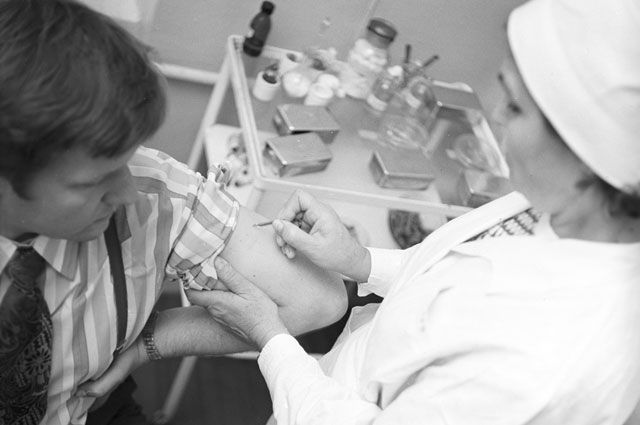
44 days on the edge of the abyss. How Moscow was saved from the black smallpox epidemic Read more
And therefore, the artist acquired the carpet left from the deceased without hesitation. Such a rarity!
Further events are known in two versions. According to the official, on December 22, 1959, Kokorekin flies to Moscow, throws a party, gives gifts and souvenirs. On December 24, he goes to the clinic with a cough. Diagnosis: “Flu, clear throat.” December 26 – rash on the stomach and chest. Suspicion of typhus. Loading doses of antibiotics, hospitalization. December 27 – hemorrhages in the sclera and blood in the sputum. Transfer to the Botkin hospital with a diagnosis of “Toxic flu, drug rash of drug origin.” December 29 – condition worsened. On the night of the 30th - death. During the autopsy, a form of plague was suspected, but it was not confirmed. On December 31, all restrictive measures against those who had contact with the deceased were lifted. And only on January 15, when employees of the Botkin Hospital turned up with similar symptoms, it became clear that there was smallpox in Moscow.
Another version is given in his “Memoirs of a Life Lived” by the doctor Yuri Shapiro , who worked at the same Botkinskaya. In his presentation, the story turns out to be downright detective: “Kokorekin returned to Moscow a day earlier than his wife was expecting him. He spent these days with his mistress. The next day I came home. Having given the gifts to his wife, he felt bad, his wife called an ambulance, and he was taken to the infectious diseases department of the hospital. Botkin... The pathologist who performed the autopsy invited the head of the department, Academician N.A. Kraevsky . An old pathologist from Leningrad came to visit Nikolai Alexandrovich and was invited to the dissecting table. The old man looked at the corpse and said: “Yes, my friend, this is variola vera - black smallpox.”
Smallpox according to GOST. How did vaccinations appear in Russia? More details
Who was the first to receive the smallpox vaccine?
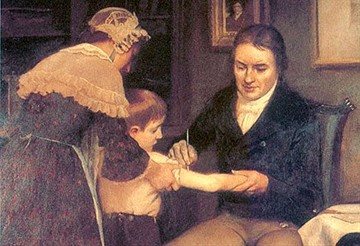
In 1796, Jenner vaccinated Phipps, an eight-year-old boy, with cowpox. When he was ill, the doctor infected him with smallpox, and as a result Phipps remained healthy.
This experience of Jenner is in all textbooks on immunology, but not all publications say that he is not the first and far from the only one who thought of vaccinating with cowpox to protect against a real infection.
In addition to the previously mentioned farmer Justi, the vaccination procedure was carried out in 1791 by a certain Peter Plett. By the way, he also came to the conclusion that it was necessary to deliberately infect cowpox as a result of observing milkmaids.
For the sake of fairness, it should be admitted that it is the unknown milkmaids who should be given primacy in vaccinations of smallpox vaccine.
Pasteur stations
In 1885, Louis Pasteur discovered rabies vaccines. Among the first 2,500 people who were able to avoid death thanks to vaccination were 16 residents of the Smolensk region who were bitten by a rabid wolf. They were sent to Paris to see Pasteur, funds for this were allocated by Alexander III.
When Pasteur stations began to appear not only in Paris, Russia immediately adopted this advanced method of combating the terrible disease. The first station was opened in Odessa on June 11, 1886, and a month later such a vaccination point appeared in Moscow.
At the Research Institute of Vaccines and Serums named after. I. I. Mechnikov, created on the basis of the Moscow station, contains a portrait with Pasteur’s autograph, which he specially sent for the opening. Nikolai Sklifosovsky was among the initiators of the creation of the station in Moscow.
By 1912, there were already 28 Pasteur stations in Russia, and by 1938 in the USSR - 80, excluding several hundred branches. At that time, the Moscow station became the leading center for the fight against rabies, where thousands of human lives were saved with the help of anti-rabies vaccines.
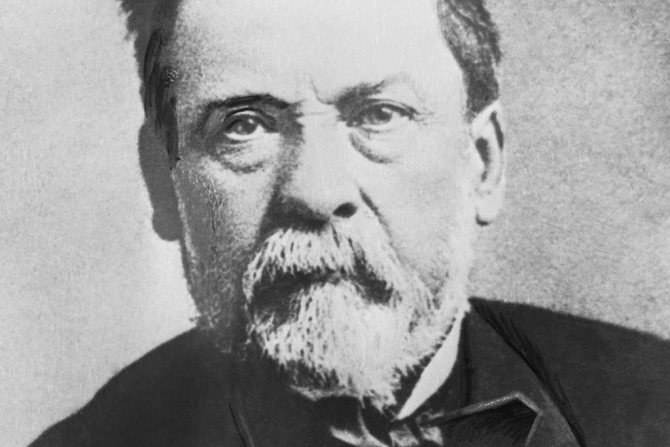
French chemist, microbiologist Louis Pasteur Reproduction TASS
